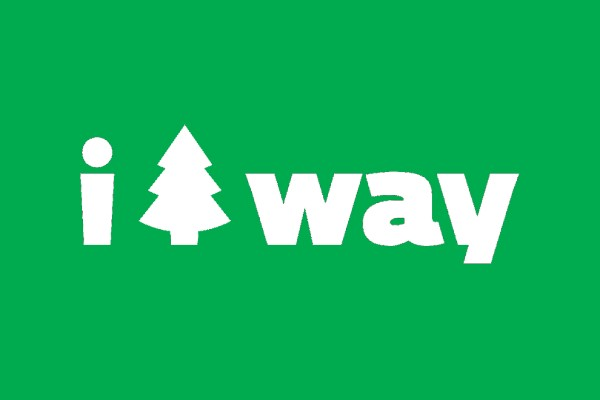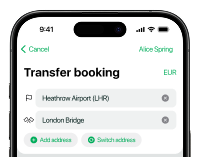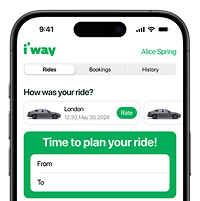To Taxi or to Transfer – that, is the question
While communicating with colleagues at industry events, we’ve repeatedly noticed that not all travel professionals can draw the line between taxis and transfer services. Whenever we’re privy to an open discussion about the transfer, there’s always the question – are you talking about football or card payments?
The difference between the two is rather superficial.
Taxi services (including ride-hailing apps) provide rides ‘here and now, whereas transfer services operate on a pre-order-only basis.
Since we are dealing with a pre-ordered service and an on-the-spot, pay-as-you-go service, we, as the user, have different expectations for each. In the first case, we expect the immediate arrival of a car after just a few taps on our smartphone. In the second case, we expect the reliable and guaranteed delivery of the car at the appointed time. This basic difference leads to the emergence of fundamentally different business models while enabling the appearance of externally similar, but completely different services.
Let’s talk about these differences between the models in more detail.
First, let’s talk about taxis.
Nowadays, we expect a taxi to arrive within 3-5 minutes after we’ve ordered it. If the wait drags on, we start to get frustrated (although we should be surprised at the technological breakthrough that made it possible to implement such a model; ten years ago, these waiting times were infeasible).
To ensure the quick arrival of a car, the taxi service must have thousands of active drivers ready to accept orders. To do this, the company needs a giant fleet of drivers, which they can attain by taking advantage of the low barriers to entry.
Do you remember the basic message with which Uber entered the market in 2012-2013? It went something like this: “Anyone can be a taxi driver. In the morning, you might be a student, an accountant, or a doctor, but in the evening you are a driver. This is normal.” Uber’s market entrance reflected the urgent need to get drivers on the road to provide an unprecedented level of convenience to the consumer.
When we know that anyone can drive a vehicle, we don’t expect much from the service. For us, it’s enough to know that the car will be modern, the driver will arrive quickly and the atmosphere within the cabin will be calm and silent.
Everything is a little different when we have an important trip ahead of us. For example, to or from the airport. In this case, our expectations and requirements increase significantly. We’re trusting that the driver will arrive on time, shall drop us off on time, and track the flight to spot delays in advance.
It’s even more difficult when we order a car for another person — there’s no room for error. There’s added stress regarding reliability, ordering in advance, and we ought to organize a sign too if it’s an airport pickup.
Can a taxi service provide all this with guarantees too? Well, it’s unlikely. The taxi business model just doesn’t focus on this. Instead, it’s focused on mass customer service, where the quantity of trips completed is the most important. When we’re talking about taxi services, the driver cannot wait for a particular guest for an hour at the airport, they cannot go to the terminal with a sign, and they aren’t interested in tracking the arrival time of the flight. Moreover, taxi services don’t appoint drivers in advance, giving them a maximum of 30 minutes’ notice before a trip.
Let’s move on to transfer services. What do we expect from them?
Transfer companies don’t provide your everyday city service. Transfers are inscribed in the chain of “airplane – car – hotel”. We subconsciously expect an equal level of service at all stages of a business trip. At the wheel, the driver is no less than the pilot of an aircraft. By the way, this is a neat psychological item that we explore through our marketing activities. We use branded signs at the airport and even go as far as using certain language, describing customers as “guests”. Sounds strange for a taxi, right?
Why can transfer services provide things that taxis cannot?
Ultimately, because orders are booked well in advance. It is not possible to order a transfer immediately, which means that there is no need for the mass recruitment of drivers to ensure their presence in every district of the city at any given time. Moreover, the volume of orders from such companies is of a completely different order. This allows you to select drivers more carefully; by nature, these drivers are going to be qualified, experienced, and will provide a much better service to their passengers.
Within a transfer service, the driver’s travel schedule is created in advance. This is both the strength and weakness of this type of service. The strength is that you get all the necessary information in advance, which increases your confidence in the quality of the service. The weakness is that when you change plans last minute or they change due to unforeseen circumstances, you often cannot cancel the reservation without a penalty — after all, the driver has already left on your order.
Will your quality expectations of support service differ? Of course. The very idea of calling ‘Uber’ seems strange; if we need to get in touch with the driver, we use the in-app chat function and wait for a response. If we call the transfer service, we expect to speak to a representative within two minutes.
In terms of conclusions, none of this makes one service better than the other. They just exist for different occasions. We’ll regularly use one on day-to-day travels within the city, while the other is reserved for special occasions such as holidays and business trips.
Although, there is one thing that gives the transfer service a clear advantage — the driver selection process. But, we’ll talk about that next time.

Dmitry Saraykin
Co-founder, Director of Development of i’way







